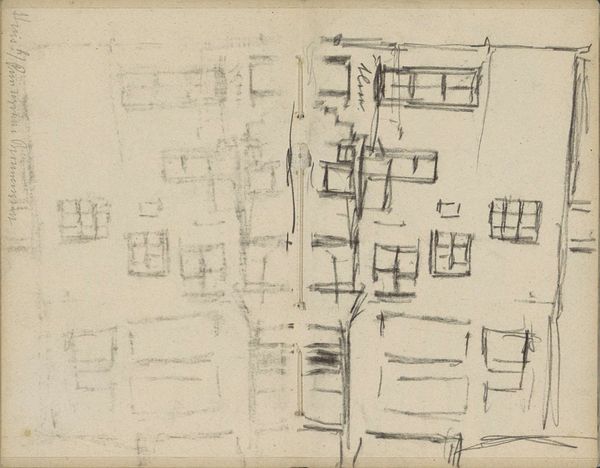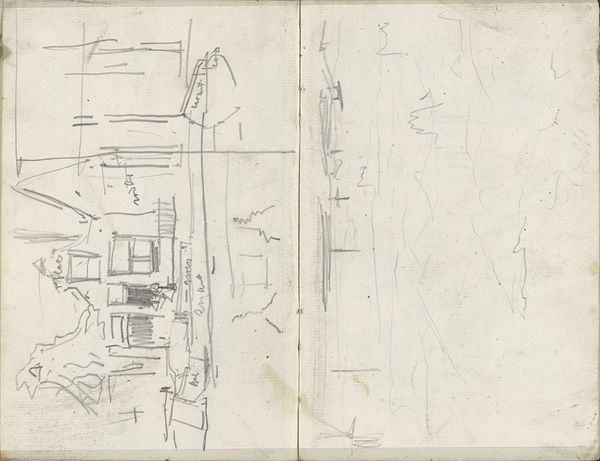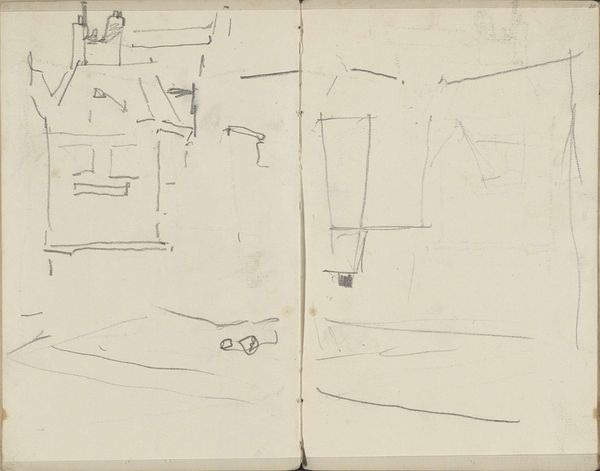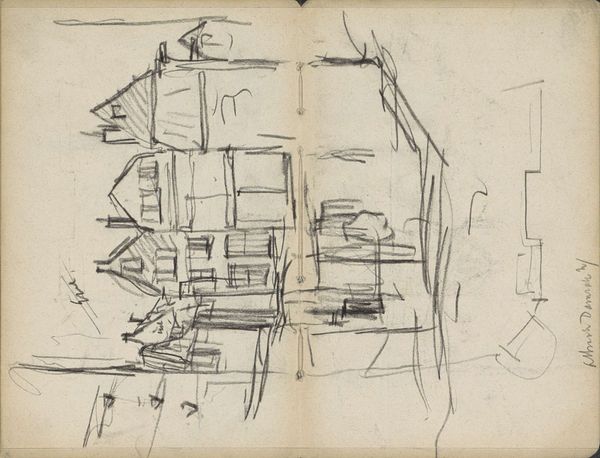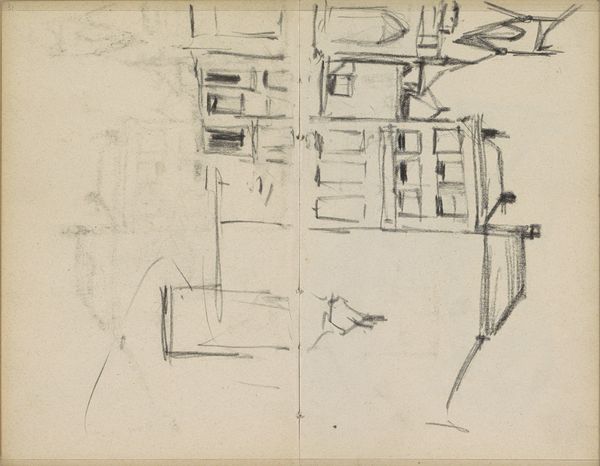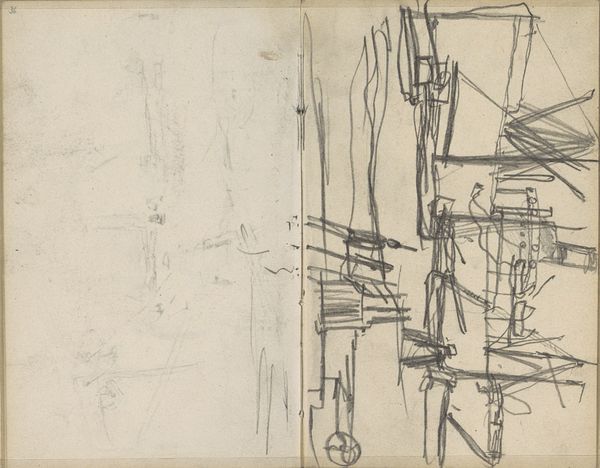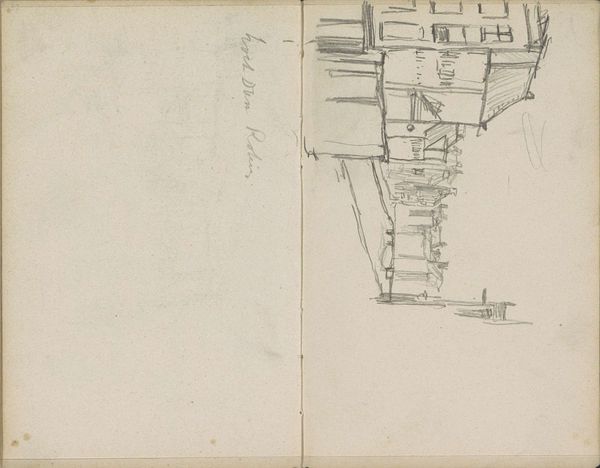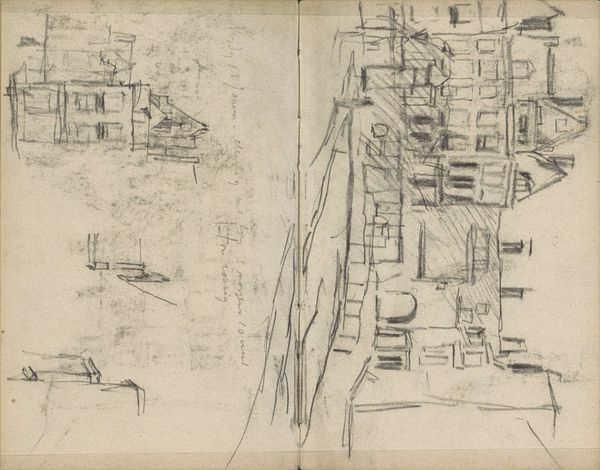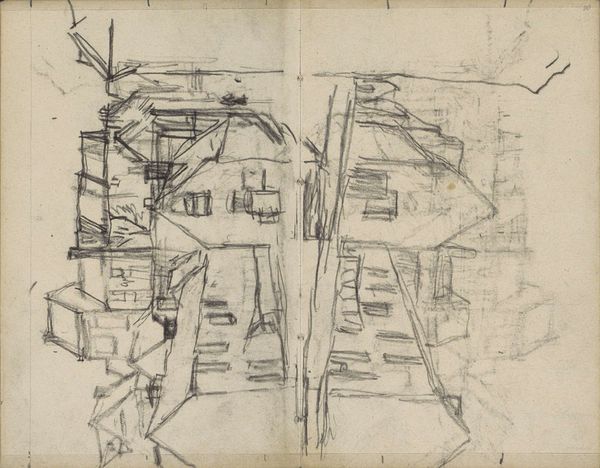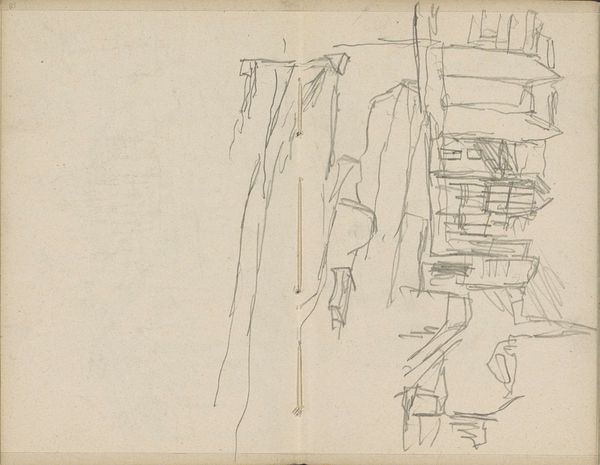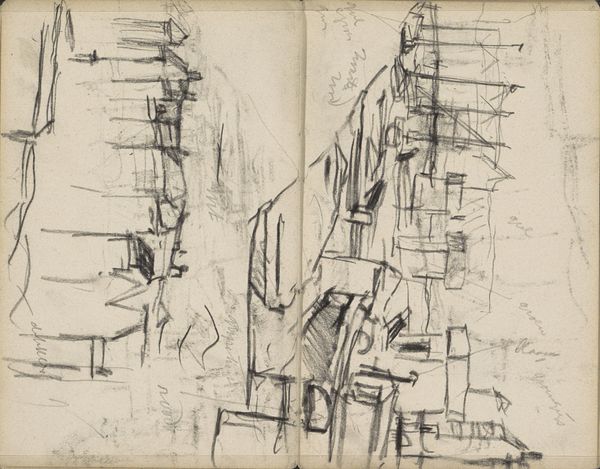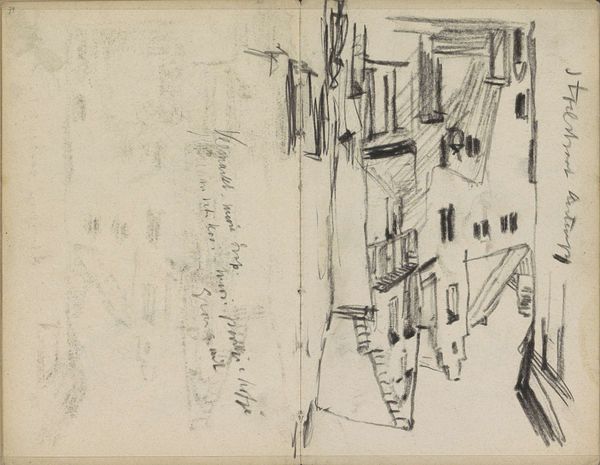
#
pen sketch
#
sketch book
#
hand drawn type
#
personal sketchbook
#
sketchwork
#
pen-ink sketch
#
pen work
#
sketchbook drawing
#
storyboard and sketchbook work
#
sketchbook art
Copyright: Rijks Museum: Open Domain
Curator: Welcome. We are looking at a sketchbook page by George Hendrik Breitner, "Gezicht op een rij gebouwen in Amsterdam," created around 1910. Editor: There’s a distinct sense of immediacy about this sketch. Raw, almost aggressively unrefined—it pulls you into the artist's first impression. Curator: Indeed. Breitner, known for capturing Amsterdam's gritty realities, employs a rapid, almost shorthand style here. The architectural facades become vessels containing an era's essence. It’s as if he aimed to distill the city’s atmosphere onto the page. The sketch hints at a shared architectural visual vocabulary: the high, narrow facades reflecting community and practicality Editor: The diagonal lines, haphazard and quick, inject a certain energy, disrupting any sense of rigid geometry. I almost sense an underlying current of chaos. Semiotically, the unrefined form challenges established academic doctrines of fine art—questioning perfection in representation. The raw texture and spontaneous composition serve as strong expressive cues. Curator: Breitner's focus extended beyond aesthetics; he chronicled life, from laborers to ladies to horses and even the urban environment. A lot like a painter, Charles Baudelaire described, who can take flight from the trivial world, and, understanding it perfectly, gives a different weight to this everyday experience by leaving behind a readable impression on its soul. Here, his cityscapes symbolize transition—urban existence's ceaseless motion, people, and evolving infrastructure. Breitner's work captures modernity, and the anxieties of constant change it wrought. Editor: So, for me, Breitner’s use of such rapid mark-making evokes temporality itself—a recognition that modern life, and all things within it, are fleeting moments. He uses the line, the essence of the graphic image, as its central point. It acts like a metaphor for the constant transformation of both urban life and lived experience. Curator: Agreed. It leaves the viewer suspended, perhaps like Breitner was—between historical record and psychological space. Editor: A fascinating reminder that the sketch itself is a symbolic object, encapsulating both an action and a process in one tangible form. Thank you.
Comments
No comments
Be the first to comment and join the conversation on the ultimate creative platform.
